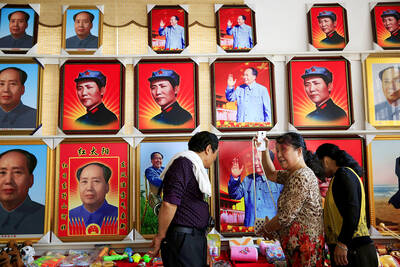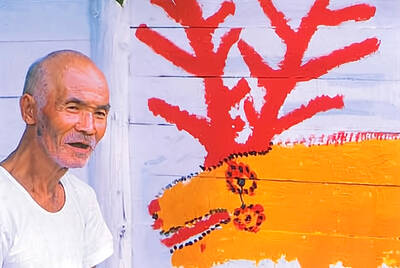Winning the gold medal was the goal of each player on the 18-and-under Taiwanese national team at the World Junior Baseball Championship that concluded earlier this month in Thunder Bay, Canada. But many of the players are also aiming for an even bigger prize — one day suiting up for the New York Yankees, Los Angeles Dodgers or another major league baseball team.
It’s Lin Tzu wei’s (林子偉) dream. The third baseman was named the tournament’s Most Valuable Player, with a batting average over .600 and 12 runs scored for Taiwan, which plays under the Chinese Taipei banner.
Lin says he hopes one day to play major league baseball like Wang Chien-ming (王建民). In fact, at this point in his career, he’s one step ahead of Tawain’s most famous baseball player. His team did better than the silver medalists Wang pitched for in 1997, joining the 1983 squad as the only other team from Taiwan to win the gold medal.
Since its inception in 1981, the World Junior Baseball Championship has featured many players who have gone on to become major league stars. Tournament alumni, in addition to Wang, include players such as American League MVP Joe Mauer, catcher for the Minnesota Twins; Kendry Morales of the Los Angeles Angels, who played for Cuba; and South Korean Shin-Soo Choo of the Cleveland Indians.
Some of the best up-and-coming 16 to 18-year-old players in the world were at the 12-team event, a fact not lost on the 30 major league franchises, which are all involved in the highly competitive process of identifying the best future players. According to Warren Philp, the lead organizer of the tournament in Thunder Bay, about 80 scouts attended the event, in addition to agents and MLB officials, many of whom came with stopwatches, radar guns and notepads, observing carefully and trying to discover the next Wang Chien-ming.
Glenn Barker, director of Pacific Rim scouting for the Houston Astros — one of the dozen or so major league teams that actively scout in Taiwan — travels to Taiwan about four to five times a year and says a tournament like this one is great for assessing talent. “When you come here, you get to see [the Taiwanese players] play against more competition from around the world and so ... you can see how they compare to other guys.”
That’s the reason Steve Wilson came to Thunder Bay. Based out of Tainan, Wilson is the Pacific Rim Scouting Coordinator for the Chicago Cubs. Wilson says Taiwanese players do well because they play year round and have fundamentally sound skills and that, at the younger levels, Taiwanese pitchers are more polished and have greater command of their secondary pitches, which they throw for more strikes. What hurts Taiwanese players by the time they reach the high school level is their size compared with players from other countries: “When you compare the bodies on the field ... it’s just physically [they] don’t have the same strength, [they] don’t have the same kind of bodies that are going to be able to have the same kind of power.” This size difference was evident between the Taiwanese team and some of the other teams at the tournament.
Height is a significant factor when determining whether a player goes to the US to play baseball, says Taiwan’s national junior team manager Huang Wu-hsiung (黃武雄). Huang says the general rule is that players should be 185cm or taller to play in the North America. Those who are shorter go to Japan or play professionally in Taiwan. However, Huang says the rule doesn’t always apply to pitchers.
Wilson agrees that pitching is not a position where size is as a big of an issue, which is why Taiwanese players have had success at the position in the major leagues. “You can be successful in the big leagues if you can pitch and locate and command and have good secondary stuff to go with it, you know ... size doesn’t matter,” Wilson says. The Cubs currently have four players from Taiwan in their system, three of them pitchers.
Adam Hislop of the Oakland Athletics, who lives in Hsinchu and scouts in Asia, knows the passion for baseball in Taiwan. “Japan, Taiwan and Korea, they are baseball countries. There’s tons of baseball, there will be a lot of talent,” Hislop says. “There are going to be more Chien-ming Wangs for sure.”
All Taiwanese players going to play for major league teams are signed as free agents and all must have a high school diploma before they can be signed. Players also have to deal with the issue of Taiwan’s mandatory military service, either by deferring it or by getting credit for it by making and playing for the Taiwan national team in international tournaments.
Huang says most of the kids who sign with teams don’t have a good sense of the difficulties they will encounter playing professional baseball in North America: “Those who go [over] do know, but the ones who haven’t yet gone, they don’t know. They don’t believe how hard it is.” One of the challenges players must overcome, Huang explains, is the language barrier.
Alan Chang (張嘉元), director of Taiwan baseball for the Chicago-based sports management agency Octagon Sports, agrees. “The sooner they learn English and ... assimilate into the team ... and get comfortable in the system [in North America] ... the more chance they have to succeed.” Among the ballplayers he represents are Wang Chien-ming, Kuo Hong-chih (郭泓志) of the Los Angeles Dodgers and Ni Fu-te (倪福德), who is in the Detroit Tigers’ organization.
Part of Chang’s job is to educate players and parents about what’s involved in going over to North America to play professional baseball. He says he tries to be realistic about a player’s prospects. The mental make-up of a player is especially important: how they will deal with the language and cultural barriers, the physical toll of a long season and the always-worrying possibility of injury, as well as going into a situation where they are not the best player.
Chang says each major league team has six minor league teams, with more than 200 players trying to make their way onto the major league roster. It’s a long road: Even if a kid sails through the process, it still takes about five to six years. Most never make it. Steve Wilson says that with six or seven players making the major leagues out of the 30 or so signed, Taiwan has a high ratio of success relative to other countries.
Chang says having Wang, Kuo and Tsao Chin-hui (曹錦輝) — who all threw in the 90-plus miles per hour range as high schoolers — emerge at about the same time is a rarity. As were the big signing bonuses they received: US$1.9 million, US$1.25 million and US$2.2 million, respectively.
For most players it’s a different story: They’ll only experience the minor leagues, with their modest pay and long bus rides. But for many players the dream persists.
“I think with Wang Chien-ming’s success in the majors, it, you know, gives Taiwanese kids, baseball-playing kids, a goal. One of our own has succeeded at the highest level. And, you know, it’s something they can shoot for. You know it does really motivate. It’s a positive thing for the growth of baseball,” says Chang.
Two of the players on the Taiwan junior team have signed with major league teams. But Lin Tzu-wei isn’t one of them. He turned 16 in February, which means he’ll still be eligible to play on the junior team and have another chance to impress scouts when the next World Junior Baseball Championship take place in South Korea two years from now.

Taiwan can often feel woefully behind on global trends, from fashion to food, and influences can sometimes feel like the last on the metaphorical bandwagon. In the West, suddenly every burger is being smashed and honey has become “hot” and we’re all drinking orange wine. But it took a good while for a smash burger in Taipei to come across my radar. For the uninitiated, a smash burger is, well, a normal burger patty but smashed flat. Originally, I didn’t understand. Surely the best part of a burger is the thick patty with all the juiciness of the beef, the

The ultimate goal of the Chinese Communist Party (CCP) is the total and overwhelming domination of everything within the sphere of what it considers China and deems as theirs. All decision-making by the CCP must be understood through that lens. Any decision made is to entrench — or ideally expand that power. They are fiercely hostile to anything that weakens or compromises their control of “China.” By design, they will stop at nothing to ensure that there is no distinction between the CCP and the Chinese nation, people, culture, civilization, religion, economy, property, military or government — they are all subsidiary

Nov.10 to Nov.16 As he moved a large stone that had fallen from a truck near his field, 65-year-old Lin Yuan (林淵) felt a sudden urge. He fetched his tools and began to carve. The recently retired farmer had been feeling restless after a lifetime of hard labor in Yuchi Township (魚池), Nantou County. His first piece, Stone Fairy Maiden (石仙姑), completed in 1977, was reportedly a representation of his late wife. This version of how Lin began his late-life art career is recorded in Nantou County historian Teng Hsiang-yang’s (鄧相揚) 2009 biography of him. His expressive work eventually caught the attention

This year’s Miss Universe in Thailand has been marred by ugly drama, with allegations of an insult to a beauty queen’s intellect, a walkout by pageant contestants and a tearful tantrum by the host. More than 120 women from across the world have gathered in Thailand, vying to be crowned Miss Universe in a contest considered one of the “big four” of global beauty pageants. But the runup has been dominated by the off-stage antics of the coiffed contestants and their Thai hosts, escalating into a feminist firestorm drawing the attention of Mexico’s president. On Tuesday, Mexican delegate Fatima Bosch staged a